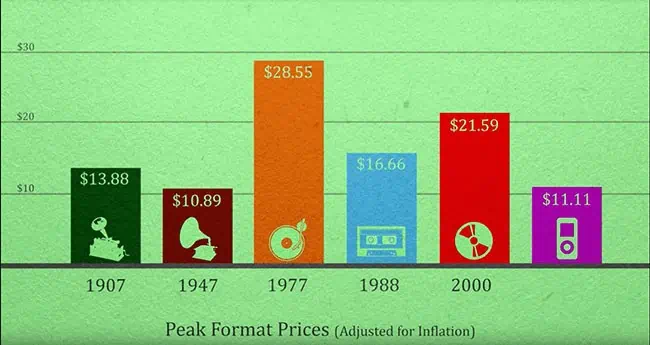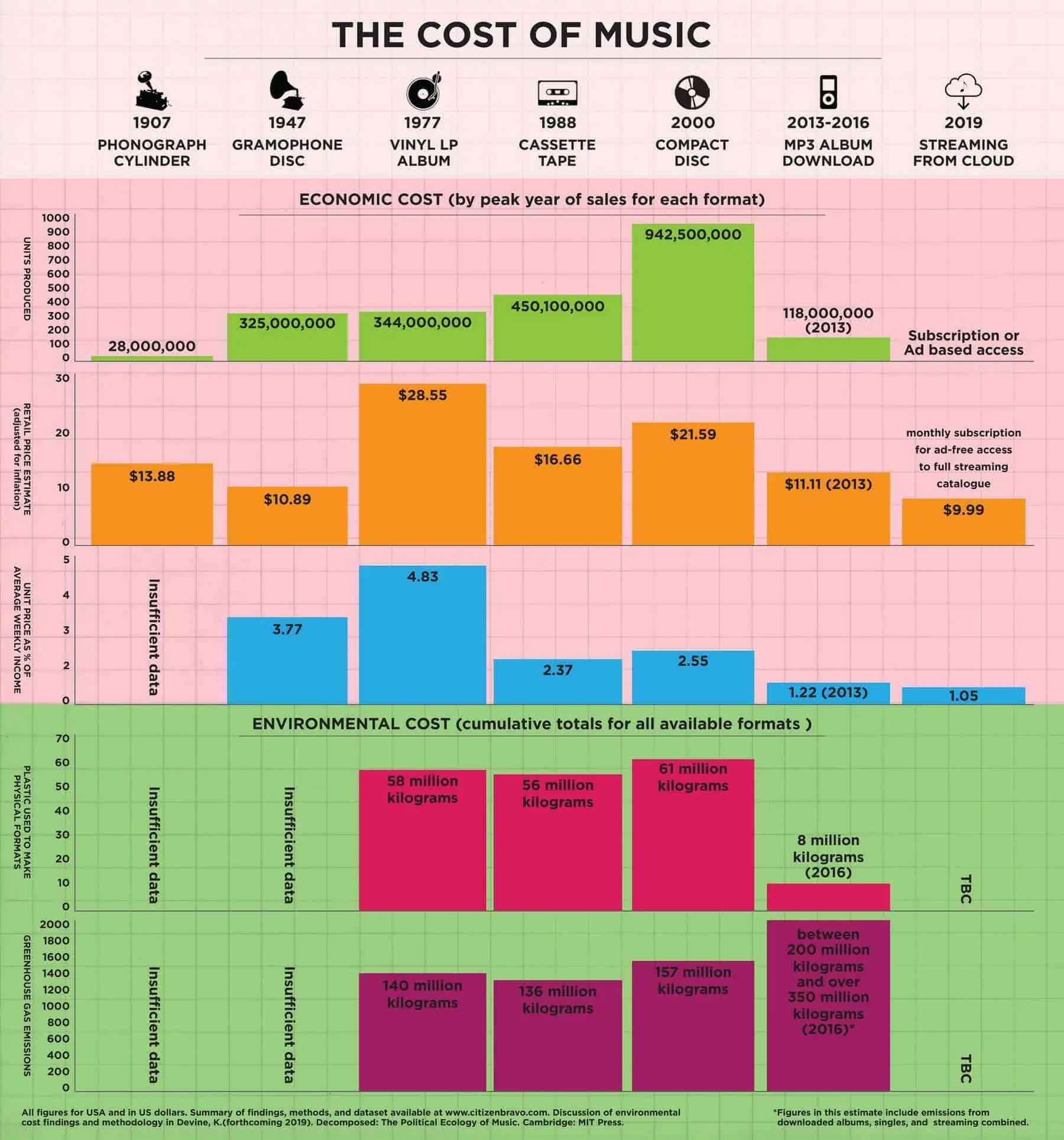
The cost of music is falling but the cost to the environment is increasing according to recent research conducted by the University of Glasgow and the University of Oslo. The price consumers have been willing to pay for listening to recorded music has never been lower while its carbon emissions costs have soared.
Dr Matt Brennan from the University of Glasgow, who led the research on the changing economic cost of recorded music, said: “The point of this research is not to tell consumers that they should not listen to music, but to gain an appreciation of the changing costs involved in our music consumption behaviour. We hope the findings might encourage change toward more sustainable consumption choices and services that remunerate music creators while mitigating environmental impact.”
Dr Kyle Devine from the University of Oslo, led the research on the environmental cost of recording formats, said: “From a plastic pollution perspective, the good news is that overall plastic production in the recording industry has diminished since the heyday of vinyl.
“From a carbon emissions perspective, however, the transition towards streaming recorded music from internet-connected devices has resulted in significantly higher carbon emissions than at any previous point in the history of music.”
The price consumers have been willing to pay for the luxury of recorded music has changed dramatically over history.
The research showed that the price of a phonograph cylinder in its peak year of production in 1907 would be $13.88 in current US dollars; versus $10.89 for a shellac disc in its peak year of 1947. A vinyl album in its peak year of 1977 cost $28.55 in today’s money, compared to $16.66 for a cassette tape in 1988, $21.59 for a CD in 2000, and $11.11 for a digital album download in 2013.
The research also shows that when plotted against the changing average salary of a US citizen over history, consumers were willing to pay roughly 4.83% of an average weekly salary in vinyl’s peak year of production in 1977, a price which slips down to roughly 1.22% of an average weekly salary in 2013, the peak of digital album sales.
The advent of streaming over the last decade, now means for just $9.99, or just over 1% of the current average weekly salary in the USA, consumers now have unlimited access to huge music catalogues via platforms like Spotify, Apple Music, YouTube, Pandora, and Amazon.
The research also looked at the environmental impact of the music industry in the US in terms of the plastics used and greenhouse emissions.

From the plastics perspective, in 1977 (the US sales peak of the LP) the recording industry used 58 million kg of plastic. In 1988 (the peak of cassette sales) the industry used 56 million kg of plastic. And in 2000 (the peak of CD sales) the industry used 61 million kg of plastic. Then, when downloading and streaming take over, the amount of plastics used by the US recording industry drops dramatically, down to around 8 million kg by 2016.
Dr Devine said: “These figures seem to confirm the widespread notion that music digitalised is music dematerialised. The figures may even suggest that the rises of downloading and streaming are making music more environmentally friendly. But a very different picture emerges when we think about the energy used to power online music listening. Storing and processing music online uses a tremendous amount of resources and energy – which has a high impact on the environment.”
The environmental impact can be shown by translating the production of plastics and the generation of electricity (for storing and transmitting digital audio files) into greenhouse gas equivalents (GHGs).
The research shows GHGs of 140 million kg in 1977, 136 million kg in 1988, and 157 million in 2000. But by 2016 the generation of GHGs by storing and transmitting digital files for those listening to music online is estimated to be between 200 million kg and over 350 million kg in the US alone.
The research collaboration informs a multimedia art project in which researcher Dr Brennan, under the artist pseudonym Citizen Bravo, has released an album entitled “Build A Thing Of Beauty,” the sole physical copy of which exists as an interactive musical sculpture called the SCI★FI★HI★FI. The sculpture is intended to engage audiences to consider the changing costs of music over history from the Edison wax cylinder up to streaming from the cloud. To listen to the album go here.
Dr Devine’s book, Decomposed: The Political Ecology of Music, will be published by MIT Press in September 2019.




